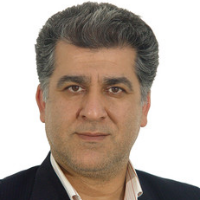The occurrence of boiling process based on mineralogical, textural and fluid inclusion evidences in epithermal deposits: a case study of Chah-Morad deposit, Sistan and Baluchistan, Iran
One of the common processes that lead to the formation and enrichment of precious metal deposits is boiling. The existence of a spatial relation between fluid boiling and deposition of precious metals is a valuable tool in exploration of epithermal deposits. Therefore, the investigating of the process occurrence in epithermal deposits will be able to predict the continuation of exploration trend. Chah-Morad epithermal gold deposit is located in 75 km northwest of Bazman in the Sistan and Baluchistan Province and in the Makran-Chagai Magmatic Arc southeast of Iran. The mineralization in the Chah-Morad deposit occurred in 3 stages and in quartz veins that exist between the altered argillic alteration zone and dacite and rhyodacite sub-volcanic rocks. Textural mineralogical and fluid inclusions studies indicate the occurrence of the boiling process in this deposit. The most important kinds of evidence for the occurrence of this process are: a) the presence of adularia, b) platy calcite texture, c) breccia, crustiform-colloform textures, d) different liquid-vapor ratios of fluid inclusions, e) the increase in the salinity of fluid inclusions with the decrease in homogenization temperatures, f) the coexistence of fluid inclusions with different salinities and g) co-existing liquid single-phase fluid inclusions with vapor single-phase fluid inclusions. Therefore, the existance of boiling is confirmed in the Chah-Morad deposit.
-
Geology, mineralography and lithogeochemistry of polymetallic (lead-copper-zinc-silver) Pirhajat deposit, Northwest Tabas
B. Yousefi, M. Maanijou *, E. Tale Fazel, M. Asadi
Journal of New Findings in Applied Geology, -
Geochemistry of natural bitumens in West of Kermanshah province (Gilan-e-Gharb)
P. Jafari, M. Maanijou *, H. Mohseni
Applied Sedimentology,



